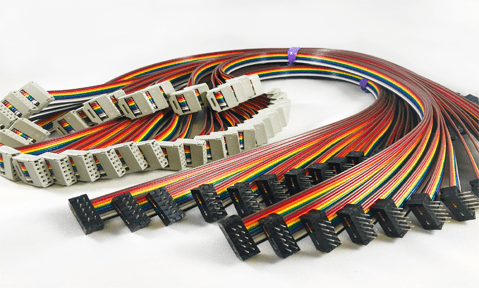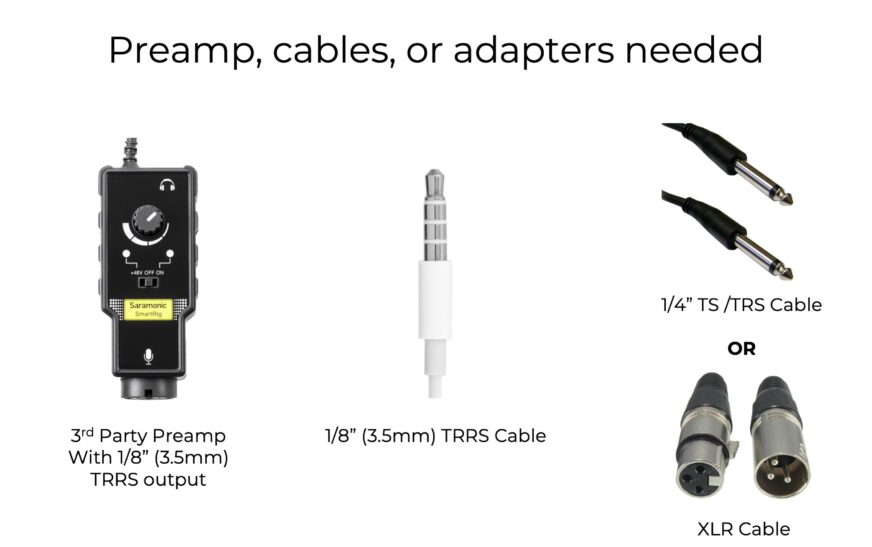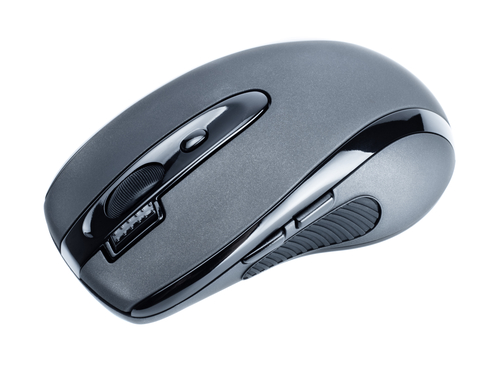Microphone jacks are essential parts of audio technology because they allow microphones to be connected to different kinds of equipment for communication, sound amplification, and recording. This article emphasizes the importance of microphone jacks in contemporary audio systems by examining the various varieties, their uses, historical background, and upcoming advancements.
1. Introduction to Microphone Jacks
Connectors known as microphone jacks enable microphones to send audio signals to computers, mixers, amplifiers, and recording equipment. Whether for live performances, podcasting, radio, or music creation, they act as vital interfaces for collecting sound. Anyone working with sound engineering or audio production has to understand microphone jacks.
a. The Value of Headphone Jacks
A crucial link in the audio circuit is the microphone jack. They ensure precise and efficient transmission of audio data by facilitating the connection between the microphone and the sound processing equipment. The choice of the appropriate connector for a certain application is crucial since the quality of the microphone jack can have a substantial impact on sound quality.
2. Types of Microphone Jacks

1. XLR Plug
In professional audio environments, the most widely used microphone jack is the XLR connector. It is a three-pin connector made to transmit balanced audio signals, which lessen interference and noise.
1. Form and Function
There are three pins on an XLR connector:
Pin 1: Earth
Pin 2: Hot and positive
Pin 3: Cold and negative
Long cable runs in professional settings require a balanced connection, which is made possible by the XLR connector’s architecture.
2. Professional Microphones with XLR Connector Applications: Because of their dependability and longevity, XLR connections are used by the majority of studio and live performance microphones.
Mixing Consoles: Audio mixing boards frequently have XLR connectors, which make it easier to connect microphones and other audio sources.
b. 6.35mm (1/4-inch) TRS Jack
Another popular microphone jack, particularly in musical instruments and other audio equipment, is the 1/4-inch TRS (Tip-Ring-Sleeve) jack.
1. Form and Function
Three components make up the 1/4-inch TRS jack:
carries the audio signal that is positive.
Ring: Sends the audio signal in reverse.
Sleeve: Acts as the link to the ground.
Like XLR connectors, this design enables the jack to transport balanced audio signals.
2. Uses for Guitar Amps with a 1/4-inch TRS Jack: 1/4-inch jacks are commonly used by electric guitars and basses to connect to amplifiers.
Boards for mixing: A portion of audio mixing consoles have 1/4-inch TRS instrument and microphone inputs.
c. Three-quarters (3.5 mm) audio jack
Numerous consumer products, such as computers, smartphones, and portable recorders, use the 3.5mm audio connection. Although its main use is to connect headphones, it can also be used to connect microphones.
1. Form and Function
There are multiple configurations for the 3.5mm jack:
TRS (Tip-Ring-Sleeve): The industry standard stereo output connection.
TRRS (Tip-Ring-Ring-Sleeve): Often seen in headsets with integrated microphones, this design adds an extra ring for microphone input.
2. Uses for Smartphones with 3.5mm Audio Jacks: TRRS connectors are used by several smartphones to combine microphone and headphones.
Laptops: The majority of laptops have 3.5mm audio input and output connectors.
d. Microphone Connector for USB
In recent years, the USB port has become more and more common, especially with digital microphones. Direct computer connection is possible with this connector, negating the need for extra mixers or audio interfaces.
1. Form and Function
The USB standard is used by USB microphones to transmit digital audio. They transform analog audio impulses into digital data so that computers and software programs can process it.
2. Uses for USB Microphone Connector Podcasting: Due to their portability and simplicity, USB mics are favored by many podcasters.
Home Recording: Because USB microphones are plug-and-play devices, they are well-liked by users of home studios.
3. Historical Development of Microphone Jacks
a. The earliest connectors and microphones
The evolution of microphones itself is intimately linked to the history of microphone jacks. Low-fidelity sound transmission techniques and basic mechanical connections were employed by early microphones.
b. XLR Connectors’ Ascent
The XLR connector was created in response to the demand for dependable and superior connections following the introduction of electric microphones in the middle of the 20th century. The industry standard for professional audio applications was swiftly established by this connector.
c. The USB microphone’s introduction
USB microphones were made possible by the advent of digital audio recording in the latter half of the 20th century. These gadgets made recording easier by enabling direct computer connections without the need for extra hardware.
4. Applications of Microphone Jacks
a. Composing Music
Microphone jacks are crucial to the creation of music because they allow producers and musicians to record sounds in high definition. They are employed in many different contexts, such as:
Recording Studios: To connect microphones to mixing consoles and audio interfaces, recording studios typically use XLR connectors.
Live Performances: To enhance their sound during live performances, musicians and performers rely on microphone jacks.
b. Audio and Video Broadcasting
In broadcasting and podcasting settings, microphone jacks are essential for facilitating successful communication between hosts. Examples of applications are:
Radio Stations: To transmit high-quality audio, broadcasters employ XLR connectors.
Podcasts: For convenient recording and editing, a lot of podcasters use USB mics.
c. Interaction and Gaming
Microphone ports are essential for voice chats and online activities in gaming and communication apps.
Gaming Headsets: Integrated microphones with 3.5mm or USB ports are a common feature of gaming headsets.
Video Conferencing: External microphones can be connected to microphone jacks to provide crisper audio during online meetings.
5. Installation and Usage of Microphone Jacks
Linking Up Microphones
A microphone can be connected in a few simple steps:
1. Determine the Type of Connector
Choose the kind of microphone jack and the gadget to which you want to attach it. USB, TRS, and XLR connectors are frequently used.
2. Center and Place the Connector in
Before putting the connector into the port, make sure it is positioned appropriately. Once the connector fits snugly, gently press it into the port.
3. Safe Networks
Make that the locking mechanism on XLR connectors is engaged to avoid unintentional disconnections while in use.
b. Resolving Typical Problems
Users that use microphone jacks may have a variety of problems. The following are some typical issues and their fixes:
1. No Audio Signal Issue: Although the microphone is attached, there is no sound.
Solution: Take a look at what is listed below:
Make sure the microphone (if any) is powered on.
Check the audio settings to make sure the correct input device is selected.
Look for any damage or loose connections on the cables.
2. Poor Sound Quality Issue: There is distortion or muffle in the audio.
Solution: Look for
loose connections: Verify that every connector is fastened firmly.
Damage to the cable: Check for breaks or frays in the cable.
Interference from the environment: To improve sound capture, turn down background noise or move the microphone.
6. The Future of Microphone Jacks
Trends in the Technology of Microphones
Evolving along with technology are microphone jacks. Notable tendencies to be aware of are:
1. A Rise in USB Microphone Usage
With its ease of use and convenience for recording and streaming applications, USB microphones are predicted to continue to grow in popularity.
2. Compatibility with Mobile Devices
Microphones with 3.5mm and USB-C interfaces are expected to become more popular as mobile devices become more and more popular for creating content, as it will be simpler for users to capture high-quality audio while on the go.
b. The enduring significance of XLR connectors
In professional audio settings, XLR connectors will continue to be essential even with the rise of digital and USB microphones. They will continue to be in demand for high-quality sound production because of their dependability and capacity to send balanced audio signals.
7. Final Thoughts
In order to connect microphones to different devices for sound recording and amplification, microphone jacks are crucial parts of audio technology. Anyone working in sound engineering or audio production has to be aware of the various kinds of microphone jacks, their uses, and how to use them correctly. Microphone jacks will change along with technology, staying relevant in a constantly shifting environment. Microphone jacks are essential for connecting sound to technology, whether it be for gaming, broadcasting, or music production.






